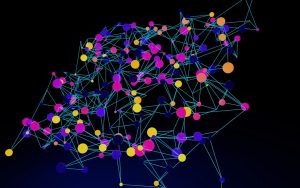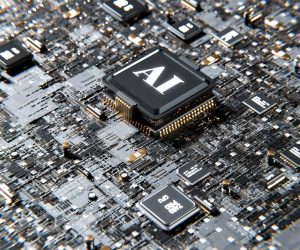Machine Learning’s Top 10 Real-World Uses
Discover the top 10 real-world applications of machine learning and see how it transforms industries. Explore these innovations now!
Healthcare Diagnosis and Treatment
Improved Diagnostic Accuracy
Machine learning algorithms have significantly enhanced the accuracy of medical diagnoses by analyzing vast amounts of data more efficiently than traditional methods. These algorithms can identify patterns and anomalies in medical images, such as X-rays, MRIs, and CT scans, that might be missed by the human eye.
This capability leads to earlier and more accurate detection of diseases, which is crucial for conditions like cancer, where early intervention can significantly improve patient outcomes.
Personalized Treatment Plans
Personalized medicine is becoming increasingly feasible with the help of machine learning. By analyzing a patient’s genetic information, medical history, and lifestyle factors, machine learning models can predict how different treatments will affect the individual.
This allows healthcare providers to tailor treatment plans specifically to each patient, improving the efficacy of interventions and reducing the likelihood of adverse reactions.
Predictive Analytics for Patient Monitoring
Machine learning is also instrumental in monitoring patients’ health and predicting potential complications. Wearable devices and health monitoring apps collect real-time data, which machine learning algorithms analyze to detect signs of deteriorating health.
This predictive capability enables healthcare providers to intervene proactively, preventing hospitalizations and improving patient care.
Drug Discovery and Development
The process of discovering and developing new drugs is both time-consuming and expensive. Machine learning accelerates this process by predicting how different compounds will interact with biological targets.
By analyzing existing data on chemical interactions and biological systems, machine learning models can identify promising drug candidates more quickly and accurately, potentially reducing the time to market for new therapies.
Streamlining Administrative Processes
Beyond direct patient care, machine learning optimizes various administrative processes within healthcare systems. Algorithms can automate tasks such as scheduling, billing, and resource allocation, reducing the administrative burden on healthcare staff.
This efficiency not only lowers operational costs but also allows healthcare professionals to focus more on patient care.
Fraud Detection in Financial Transactions
Introduction to Fraud Detection
Fraud detection in financial transactions is a critical application of machine learning that helps institutions identify and prevent fraudulent activities. With the increasing volume of transactions and the complexity of fraud tactics, traditional methods are often insufficient.
Machine learning offers a dynamic and efficient approach to detect anomalies and potential fraud in real-time.
Machine Learning Techniques Used
Several machine learning techniques are employed in fraud detection, including supervised and unsupervised learning. Supervised learning models, such as logistic regression, decision trees, and neural networks, are trained on labeled datasets containing both legitimate and fraudulent transactions.
These models learn to identify patterns and characteristics of fraudulent activities.
Unsupervised learning techniques, such as clustering and anomaly detection, are used when labeled data is scarce. These methods identify outliers and unusual patterns that may indicate fraudulent behavior without prior knowledge of fraud cases.
Real-Time Transaction Monitoring
One of the significant advantages of machine learning in fraud detection is its ability to process and analyze vast amounts of transactional data in real-time.
This capability allows financial institutions to monitor transactions as they occur, flagging suspicious activities immediately. Real-time monitoring helps in reducing false positives and enables quick response to potential threats.
Challenges and Considerations
Implementing machine learning for fraud detection comes with challenges, including the need for large and diverse datasets to train accurate models.
Additionally, fraudsters continuously evolve their tactics, requiring models to be regularly updated and retrained to maintain effectiveness.
Another consideration is the balance between detecting fraud and minimizing false positives. High false positive rates can lead to customer dissatisfaction and operational inefficiencies.
Therefore, models must be finely tuned to ensure precision and reliability.
Impact on Financial Institutions
Machine learning has significantly impacted how financial institutions approach fraud detection. By automating and enhancing the detection process, these institutions can reduce losses due to fraud and improve their overall security posture.
Moreover, the insights gained from machine learning models can inform broader risk management strategies and enhance customer trust.
Personalized Recommendations in E-commerce
Understanding Personalized Recommendations
In the realm of e-commerce, personalized recommendations are a crucial application of machine learning. These recommendations are tailored suggestions provided to users based on their browsing history, purchase behavior, and preferences.
By analyzing vast amounts of data, machine learning algorithms can predict what products a user might be interested in, thereby enhancing the shopping experience.
Benefits of Personalized Recommendations
Personalized recommendations significantly increase customer engagement and satisfaction. By offering relevant suggestions, e-commerce platforms can reduce decision fatigue for users, making the shopping process more enjoyable and efficient.
This personalization leads to higher conversion rates, as customers are more likely to purchase items that align with their interests.
Furthermore, personalized recommendations can boost customer loyalty. When users feel understood and valued, they are more likely to return to the platform for future purchases.
This long-term relationship building is essential for e-commerce businesses aiming to maintain a competitive edge.
Machine Learning Techniques Used
Several machine learning techniques are employed to generate personalized recommendations. Collaborative filtering is one of the most common methods, which involves analyzing user behavior and preferences to suggest items that similar users have liked.
Content-based filtering, on the other hand, focuses on the attributes of items that a user has shown interest in, recommending similar products.
Advanced techniques such as deep learning and neural networks are also increasingly used to enhance recommendation systems. These models can process complex datasets and identify intricate patterns, allowing for more accurate and sophisticated suggestions.
Challenges and Considerations
While personalized recommendations offer numerous advantages, they also pose certain challenges.
Privacy concerns are paramount, as users may be wary of how their data is collected and used. E-commerce platforms must ensure transparency and comply with data protection regulations to build trust with their customers.
Additionally, the effectiveness of recommendation systems depends on the quality and quantity of data available.
Sparse or inaccurate data can lead to irrelevant suggestions, which may frustrate users and diminish the perceived value of the recommendations.
Autonomous Vehicles and Transportation
Revolutionizing Road Safety
Autonomous vehicles are at the forefront of transforming road safety through machine learning. By leveraging advanced algorithms, these vehicles can process vast amounts of data from sensors and cameras in real-time.
This capability allows them to detect obstacles, predict the actions of other road users, and make split-second decisions to avoid accidents. Machine learning models are continuously trained on diverse datasets to improve their accuracy and reliability, significantly reducing the risk of human error.
Enhancing Traffic Management
Machine learning plays a crucial role in optimizing traffic flow and reducing congestion in urban areas.
Autonomous vehicles equipped with machine learning capabilities can communicate with each other and with smart infrastructure to share data about traffic conditions. This information is used to adjust routes dynamically, manage traffic signals, and predict traffic patterns.
As a result, travel times are reduced, fuel consumption is minimized, and overall transportation efficiency is improved.
Improving Public Transportation
Public transportation systems are also benefiting from the integration of autonomous technology powered by machine learning. Autonomous buses and shuttles are being deployed in various cities to provide efficient and reliable services.
These vehicles use machine learning to navigate complex urban environments, ensure passenger safety, and adhere to schedules. Additionally, data collected from autonomous public transport can be analyzed to optimize routes and improve service delivery.
Facilitating Last-Mile Delivery
The logistics and delivery sectors are experiencing a transformation with the advent of autonomous vehicles.
Machine learning enables these vehicles to navigate efficiently through urban landscapes, ensuring timely and accurate deliveries. Autonomous delivery vehicles can operate 24/7, reducing delivery times and operational costs.
Machine learning algorithms also help in planning optimal delivery routes, taking into account factors such as traffic conditions and delivery priorities.
Environmental Impact
Autonomous vehicles contribute to a reduction in carbon emissions by optimizing driving patterns and reducing idle times. Machine learning algorithms ensure that these vehicles operate at peak efficiency, minimizing fuel consumption.
Furthermore, the integration of electric autonomous vehicles into transportation networks further enhances environmental sustainability by reducing reliance on fossil fuels.
FAQ
Q1: What are the potential costs associated with adopting machine learning applications in real-world scenarios?
A1: The costs of adopting machine learning applications can vary widely depending on several factors, including the complexity of the application, the scale of deployment, and the existing infrastructure. Initial costs often include investment in hardware and software, such as purchasing high-performance servers or cloud computing resources, and acquiring machine learning platforms or tools. Additionally, there may be costs related to hiring skilled personnel, such as data scientists and machine learning engineers, who can design, implement, and maintain these systems. Training existing staff to work with new technologies is another potential expense. However, many companies find that the long-term benefits, such as increased efficiency, improved decision-making, and enhanced customer experiences, can outweigh these initial costs. To mitigate expenses, businesses can start with small-scale projects or leverage open-source tools and platforms that offer lower-cost entry points.
Q2: How accessible are machine learning applications for individuals or teams without a strong engineering background?
A2: Machine learning is becoming increasingly accessible to non-engineers, thanks to the development of user-friendly platforms and tools that abstract much of the complexity involved in building models. Many platforms offer drag-and-drop interfaces and pre-built algorithms that allow users to experiment with machine learning without needing to write code. Additionally, numerous online courses and resources are available to help individuals gain a foundational understanding of machine learning concepts. However, while these tools can lower the barrier to entry, having a basic understanding of data analysis and statistics is still beneficial. For teams without technical expertise, partnering with consultants or hiring experts to guide the initial phases of implementation can also be a practical approach.
Q3: What are some common challenges in implementing machine learning applications, and how can they be addressed?
A3: Implementing machine learning applications can present several challenges. One common issue is data quality and availability; machine learning models require large amounts of high-quality data to train effectively. Organizations may need to invest in data cleaning and preprocessing to ensure their data is suitable for use. Another challenge is integrating machine learning models with existing systems and workflows. This can require significant changes to IT infrastructure and processes, necessitating careful planning and collaboration across departments. To address these challenges, businesses can start with pilot projects to test integration on a smaller scale and gradually expand as they refine their approach. Additionally, leveraging cloud-based machine learning services can help overcome infrastructure limitations by providing scalable resources and tools. Finally, fostering a culture of continuous learning and adaptation within the organization can help teams stay abreast of new developments and best practices in the rapidly evolving field of machine learning.
Takeaway
“Ready to supercharge your productivity? Try our cutting-edge AI tool today! Stay ahead of the curve with the latest tech trends – subscribe now. Join our vibrant community of tech enthusiasts and dive into thought-provoking discussions. Time to level up your tech game – let’s connect!” Industry analysts believe this signals a shift in market dynamics.











Comments